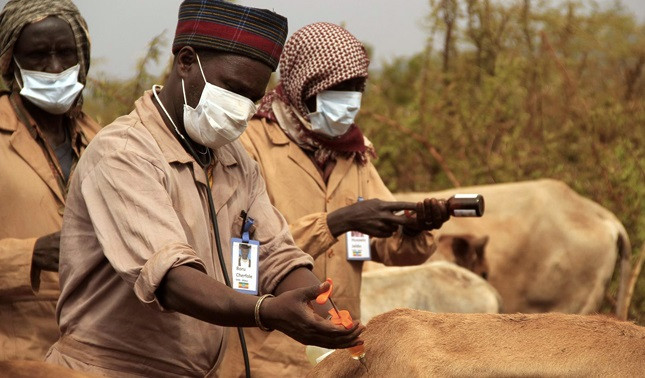Putrid camel pee could hold key to treatment for deadly African sleeping sickness
Understanding what makes infected camels' pee stink could lead to new drug targets for trypanosomiasis in humans.

Camels suffer from infections from the same parasite that causes sleeping sickness in humans and it makes their pee smell awful – identifying what makes this smell could now lead to treatments for the disease in humans, a study has found.
The pee of camels infected with trypanosomes – which cause sleeping sickness in humans and is known as nagana in domestic animals – is red-brown colour and smells putrid. This is the work of the trypanosome parasite, transmitted by the tsetse fly, which breaks down amino acids into a chemical called indolepyruvate, a study in the journal PNAS finds.
The indolepyruvate is released into the blood where it sabotages immune cells, making the host more vulnerable to the disease.
The immune system is particularly affected by indolepyruvate at the peak of infection, says study co-author Derek Nolan of Trinity College, Dublin, Ireland. This actually prolongs the survival of the host even as the disease develops, which increases the likelihood that the camel, or human, will pass on the disease, which is transmitted by the tsetse fly.
"Camel herders have long known that the urine of camels infected with trypanosomes has a pungent odour, and is reddish brown in colour," says Nolan. "We found that this is directly attributable to parasite breakdown of aromatic amino acids, such as tryptophan, in the host, and to the excretion of the novel by-products into the bloodstream."
"We are hopeful that by solving the riddle of the putrid camel pee, these new insights have unearthed a potential target for anti-trypanosome therapies," says Nolan.
Understanding the mechanism by which trypanosomes undermine the immune system could lead to targets for better treatments for sleeping sickness. Existing treatments for the disease are toxic and not particularly effective given the difficulty of acquiring the drugs in rural areas, and the complex ways in which they must be administered.

The number of reported cases of sleeping sickness dropped below 10,000 for the first time in 50 years, according to the World Health Organization. In 2014 there were 3,796 cases reported. There has been an 85 per cent reduction in cases since 2000, but 61 million people in Sub-Saharan African countries are still at risk of the disease.
© Copyright IBTimes 2025. All rights reserved.





















